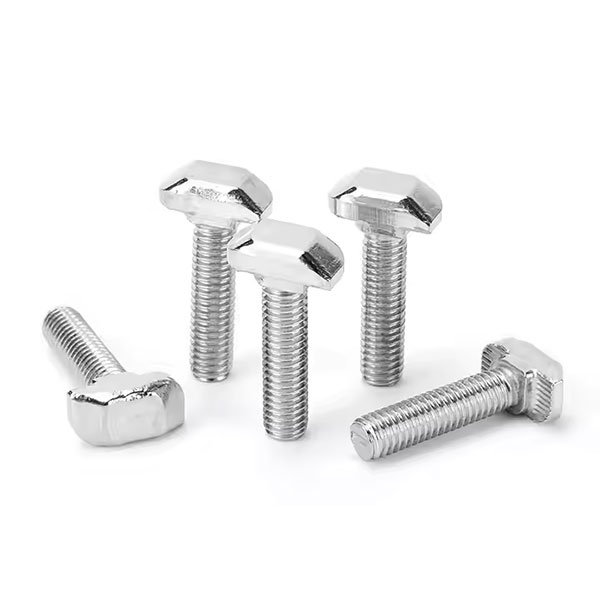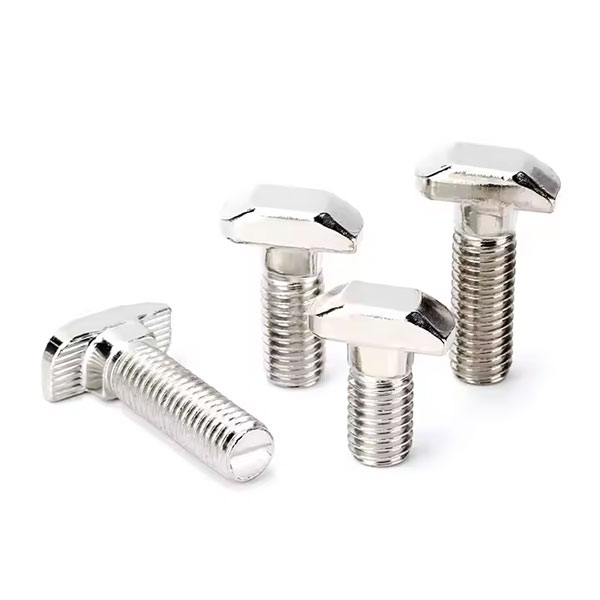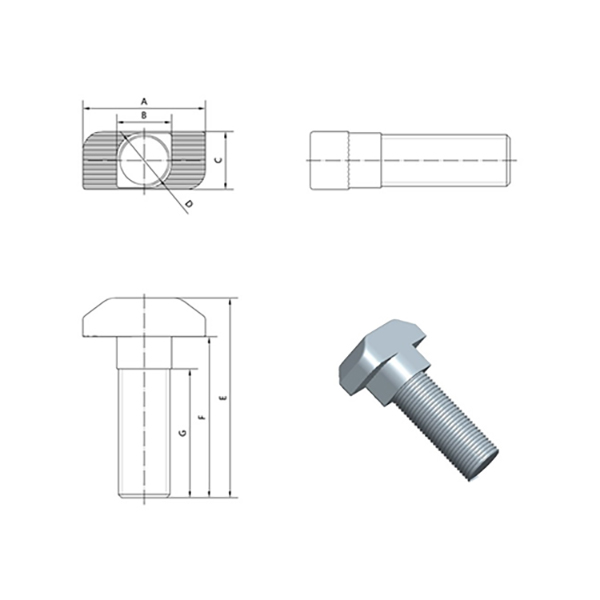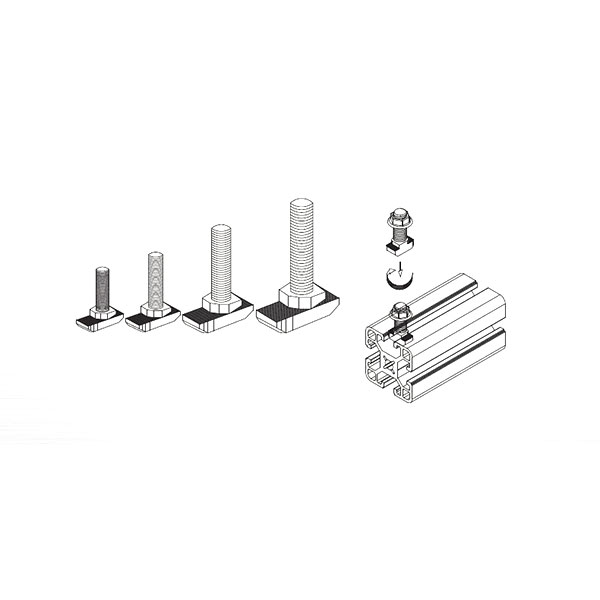T-type bolts, also known as T-slot bolts or T-head bolts, are specialized fasteners designed for applications requiring a secure and flush connection. Here’s a detailed introduction to T-type bolts:
Design and Function
T-type bolts feature a distinctive T-shaped head that fits into T-shaped slots, commonly found in machinery, tools, and structural frames. This design allows for easy insertion and tightening without needing access to the rear side of the assembly, which is particularly convenient for various applications.
Key Features
- T-Shaped Head: The flat T-shaped head slides into matching T slots, providing a low-profile connection.
- Threaded Shaft: The bolt’s shaft is threaded for use with nuts or threaded directly into compatible components.
- Ease of Installation: T-bolts save time and effort as they can be quickly inserted and adjusted without disassembling the entire structure.
- High Load Capacity: Built to endure substantial loads, T-bolts are used in heavy-duty applications.
Materials and Specifications
T-bolts are typically made from materials like stainless steel, carbon steel, or alloy steel, which offer high strength and corrosion resistance. They are available in various sizes and thread types to meet different load requirements and environmental conditions. The physical properties of Grade 5 screws, for example, meet the SAE J429 specifications, with a minimum tensile strength of 120,000 psi and a Rockwell Hardness of Rc 25/34.
Applications
T-bolts are versatile and find use in multiple industries:
- Machinery and Equipment Assembly: Secure components in milling machines, lathes, and CNC equipment.
- Construction and Structural Framing: Used for modular structures, metal frameworks, and scaffolding.
- Automotive and Aerospace: Employed in critical components due to their high strength and vibration resistance.
- Solar Panel Installation: Used to fasten panels to rails or frames in solar mounting systems.
- Furniture and Fixtures: Provide flexibility and strength in adjustable and modular furniture.
Manufacturing Process
The manufacturing of T-bolts involves several methods, including:
- Cold Heading: Shaping wire or rod stock into the desired shape under high pressure.
- Hot Forging: Shaping heated metal using dies and presses.
- Thread Rolling: Creating precise threads using hardened steel dies.
- Machining: Producing custom bolts with complex shapes or non-standard specifications.
- Wire Drawing: Reducing the diameter of a metal wire or rod to the desired size.
Considerations
When using T-bolts, ensure the size and thread type match the T-slot dimensions and application needs. Choose a material suitable for the environmental conditions, especially for outdoor or corrosive environments. Apply the correct torque according to the manufacturer’s specifications to prevent the nut from loosening or over-tightening.
















